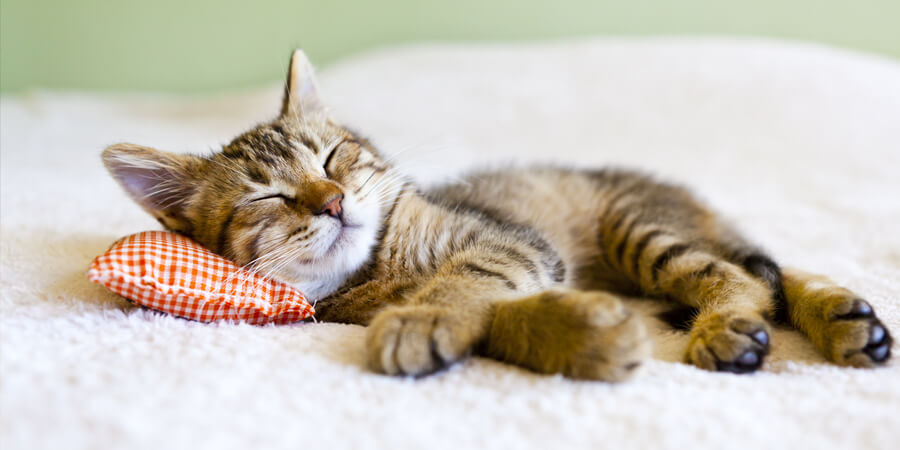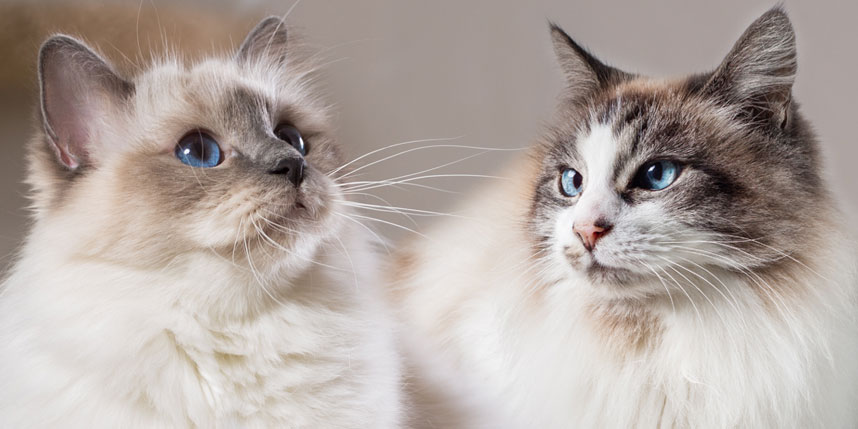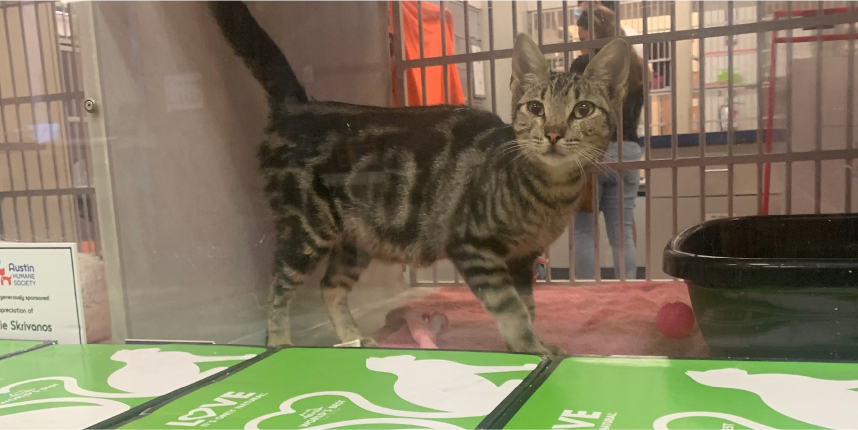10 WAYS TO KEEP YOUR CAT HAPPY AND HEALTHY
Your Cat Helps Keep You Happy and Healthy - Why Not Return the Favor? Check out our list of ways…

The Great Tale of the American Bobtail Cat
“Look at that adorable ca—where’s her tail!?!”
American bobtail cats probably hear this whenever they meet new people. Their most distinguishing feature is either a very short stub where a long tail should be, or no tail at all!
Besides their interesting tail situation, American Bobtails are lovable, affectionate, and friendlier than the average domestic cat. Their sturdy build, broad chest, and muscular appearance might make them look wild, but these cats have a temperament closer to that of a Golden Retriever!
So, where’s the tail?
An expressive tail might be one of the first things that comes to mind when imagining a regular house cat, but American bobtails are tail-free and loving it!
Urban legend says that the breed came from a bobcat mating with a domestic tabby cat. But the truth is more scientific than that. Their lack of a tail is the result of a spontaneous genetic mutation of the spine. The mutation is natural and is no cause for concern.
While American bobtails are a rare breed to find, there are other types of naturally bred bobtails across the world:
- Manx cats from the Isle of Man in the United Kingdom
- Japanese Bobtails from Asia
- Kurilian Bobtails from Russia
- Pixie-Bobs from the United States
Where did the American bobtail come from?
American bobtails are a newer cat breed. In the 1960s, an American couple on vacation in Arizona discovered a unique looking cat without a tail.
They adopted him, named him Yodie, and brought him home where he quickly romanced the family’s female Siamese cat. Soon after, a litter of kittens was born without tails!
Breeders sprouted up soon after the first litter. Pedigree American Bobtails have never been used in breeding practices to ensure the gene pool is diverse.
(Lack of) tail characteristics
Stubbins, Rumpy Risers, and Stumpies. Those are just a few of the many adorable ways to describe the American bobtail. While many are considered fully tailless, they can actually have different tail lengths, varying between one to four inches. Some might have just a tiny stub, while others can have tails half the length of a non-Bobtail cat’s tail. Their small tails can appear straight, kinked, or curved.
How much you can see of their tails depends on whether they are short-haired or long-haired. Their coat colors and patterns vary, but the dominant trend is wild colors and markings.
Personality

American bobtails have a hunting gaze and a sturdy body type, giving them a wild-looking appearance. But don’t let their lynx-like looks fool you. American bobtails are people-loving softies that love napping in their favorite human’s lap!
American bobtails bond deeply with their single humans, and can adapt easily to family life with kids. They are more playful, friendly, and affectionate than the average pet. With an easy-going, tolerant temperament they get along well with other cats and dogs and can tolerate aggressive love from small kids.
Fun facts about the American bobtail
- American Bobtails are known for their dog-like behavior. They love hanging out with their humans and are always up for a game of fetch or hide-and-go-seek.
- Their dog-like behavior also includes being well behaved and affectionate, which makes them perfect therapy pets. American Bobtails have such a good temperament that they are nicknamed the Golden Retriever of cats!
- This breed also has a reputation for wanderlust. American Bobtails are great travelers if you start car rides when they are young. This makes them ideal companions for long-haul truckers.
Vital stats about the American bobtail
- Average weight: 7-16 pounds
- Average height: 10 inches
- Lifespan: 13-18 years
- Tail: 1-4 inches
- Origin: United States
- Temperament: “The Golden Retrieve of cats”
- Energy levels: Playful, but not overactive
American Bobtails make the perfect pets, whether you live alone or with a big family. If you’re interested in adopting one of your own, you’ll have to do some research. These cats are considered rare, but you can always check Petfinder or search for a local breeder.
To learn more about how to care for your new cat, click here.



